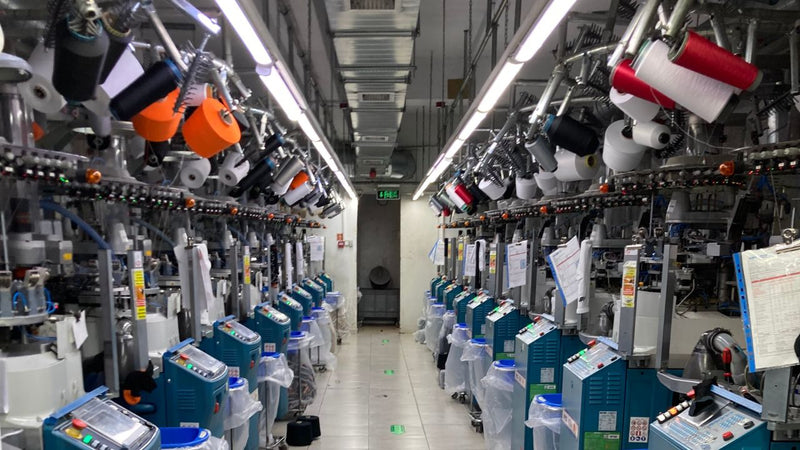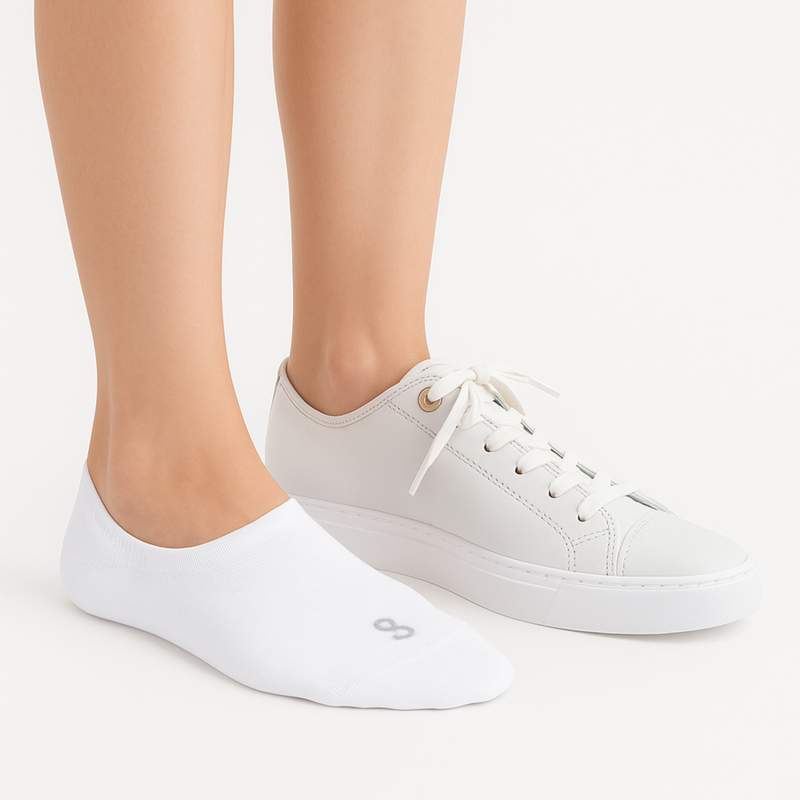
The humble sock — a simple item crafted from a substantial length of material. It’s one of the most utilitarian items in any wardrobe, with dozens of uses: protection, warmth, fashion statement and more.
But how are socks made? Where are they made? What materials are they typically made from? And what do they use today to make them so that they’re comfortable and long lasting?
There are a lot of different ways in which socks are made. In this article we’re going to look at a typical design and production process, so that you'll gain a basic understanding of how socks are made.
Pattern Coding
Once a sock design has been sketched, it needs to be translated into a format which a knitting machine can understand. The knitting machine does its work based on individual needles.
For example, when we refer to hipSwan socks being 168N or 200N, these are the number of needles used by the knitting machine. The diameter of a knitting machine cylinder is fixed, so the greater the number of knitting needles within that cylinder, the more dense (finer) the weave of the sock. For a 200 needle machine, the knitting cylinder holds 200 very thin knitting needles that are 1/50th of an inch thick.
The job of the pattern coder is, therefore, to translate a sock sketch into a grid that defines what colour each needle should be.
Once the pattern coding is ready, it is saved and assigned to the specific machines that will be knitting your socks.

Yarn Selection
Yarn selection is a critical part of producing quality socks. At hipSwan, we focus on sustainable yarns such as organic combed cotton and merino wool.
In order to improve durability and achieve performance features like the compression arch band, branding, and elasticity, these base yarns are mixed with other elements like nylon and elastane.

Dyeing Process
When yarns are first produced they are in a natural/undyed state, which for cotton is a beige/ivory colour. To create the colours specified in the design, the yarns must then be dyed. Dyes introduce chemicals into the sock production process, which can be minimised by using vegetable or other non-toxic dyeing agents.

Knitting Socks
Once the designs and yarns are programmed into the sock knitting machine, the knitting process begins and the magic starts to happen.
All the different yarns comprising the final sock are loaded into the machine and in smooth and symphonic movements, the selected sock yarns are activated by the programmed design.
By the end of this stage, what was once yarn has now become a sock (almost!).

First Inspection
It’s quality assurance time! Once the first socks come out from the machine, quality inspectors delve into each one to examine them thoroughly. They are moved from one eye to another until the inspectors are confident that all the socks are error-free, and can proceed to a full production run.
Linking/Sewing Socks
The knitting machines produce socks in a tube-like structure, open at both ends.

Advanced knitting machines then proceed to the linking stage and produce completely finished socks, one-by-one. Other times, a separate machine does the linking and sewing at the toes. It is also still commonly done by hand, as the work is very intricate.
Second Inspection
After the linking comes another pause in the sock manufacturing process. For the second time, experts scan the final socks to make sure they are exactly as defined in the original design and have no production flaws.

Boarding
The boarding stage is a simple one. It paves the way for the final stage by ironing the socks and making sure they are kept in perfect shape. Then they undergo a fixed degree of pressure and temperature to keep the socks tidy and bright.

Pairing, Labelling, Final Inspection & Packaging
Finally, we have arrived at the last stage of the sock manufacturing process. The final, approved socks are paired and are inspected for a third and final time.

They are then wrapped in our branded recycled kraft paper wrappers, enclosed in individual biodegradable poly bags and packaged into cartons, ready for shipping in bulk to hipSwan's distribution centre in the UK.

External Inspection / Quality Control Audit
But before they are permitted to ship, hipSwan performs an independent audit / quality control check for each style and batch. Only then do we schedule the shipment to the UK (either by air, sea or land).
Finally, the cartons are loaded onto pallets and wrapped to protect against the elements.

At this stage we calculate the carbon emissions involved in bulk shipping and purchase carbon offsets, as part of our sustainability policies.
Conclusion
The sock manufacturing process is rather lengthy, but it’s also quite fascinating. There are numerous steps that go into the production of a single pair of socks, and each step is vital in order to produce high-quality socks.
Thanks to the rise of technology and an increase in globalisation, manufacturing processes can be done in any number of facilities around the world. It's safe to say that socks are made everywhere and anywhere that you want them.














